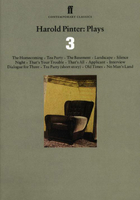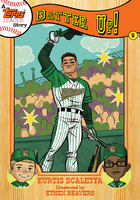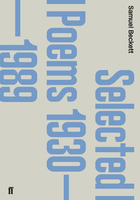THE GRIP
Naturally formed is neutrally performed
INTRODUCTION
Your level of success as a golfer is determined solely by the degree of control that you possess over the trajectory, direction and speed of the golf ball. In turn, the quality and efficiency of every physical action that you perform during your swing is largely determined by the quality of your grip formation in relation to the golf club.
There is no compromise when forming your grip; it either works in harmony with the club or it does not. In the same way that an artist will start with a rough, disorganized sketch and, in time, build on that initial outline to create a masterpiece, you must constantly refine your grip until it is at one with the club, body and mind. In short, exquisitely placed hands onto the golf club should be viewed as nothing less than a living work of art.
The hands are incredibly versatile instruments. They are sensitive to temperature, they assist you with your balance and they relay feelings of weight and texture. When playing golf, your grip carries this vital information to the brain and it is essential that the correct messages are able to filter through. A neutral grip is one that establishes total harmony between the clubface and the hands. When these two factors work in unison the potential of the golf swing can be realized. If your hands are poorly positioned in relation to your body and the club, the golf swing becomes suppressed, and is reduced to nothing more than a muddle of compensatory actions.
Unfortunately, the grip is a feature of the golf swing that can deteriorate over a period of time without offering any visible, telltale signs of doing so. The grip is usually one of the last things that a golfer considers when things start to go awry on the course, yet almost every move performed during the swing is affected by it in some way or other.
In more than 90 percent of instances, a faulty grip will create a damaging swing flaw.
Although the importance of the mental aspect of the game cannot be overstated, as it is a vital component of playing great golf, physical errors can cripple even the most intelligent and mentally resilient athlete or sportsman. In my experience a faulty grip will create a damaging swing flaw in more than 90 percent of instances, and creating the correct grip-formation habits early on will save you plenty of time, work and frustration at a later stage in your golfing life.
An analogy may best explain why the grip is so crucial: imagine a race between a professional Formula One racing driver and your average road user. The Formula One driver draws the short straw and has to drive a conservative family sedan while the other driver is given a Ferrari.
Although the average driver would initially struggle to gain full control over the power of the Ferrari, they would still be able to achieve a decent level of competency relatively quickly. The Formula One driver, even with the added advantages of experience, knowledge and tactical skill, would inevitably find his performance restricted by the physical limitations of his car.
This chapter will show you how to take the first steps to creating a sound and consistent swing by building a solid grip that unifies the relationship between the handle of the club and the hands. Remember, a great golf swing shows expression, not suppression.
THE GRIP—SETTING THE COMPASS OF THE SWING
A key point that applies to all aspects of learning golf is that you should always focus on what you want to achieve rather than what you want to avoid. A neutral grip founded upon the body's natural biomechanical laws will enable you to achieve this, as it will provide you with a level of confidence and belief that will help stop the combination of negative self-talk, anxieties and doubts that can ruin your chances of playing well.
A neutral grip also has the benefit of instructing your eyes to automatically focus on what is a realistically achievable target instead of scanning and searching for a safe place to "miss" the shot. Everything that you read on the grip throughout the whole of this chapter is based upon two indisputable laws—the law of natural hand alignment and the law of mobility.
A NEUTRAL GRIP—A NATURAL TARGET.
A GRIP IN WHICH THE HANDS AND CLUB ARE ONE IS THE PERFECT GRIP.
AN ILLUSTRATION OF NATURAL HAND ALIGNMENT.
SUB-LAW 1: THE LAW OF NATURAL HAND ALIGNMENT
This law is based upon the fact that the human body is symmetrical in its structure. Both sub-laws pay particular attention to this fact, since the way in which you position your body when addressing the ball will either trigger a chain reaction of solid, orthodox and powerful moves or a series of power-sapping and inconsistent compensations.
The further your swing moves away from the basics of symmetry and equality, the more it has to fight for consistency and simplicity. Your grip is the starting point in the process of creating balance within the swing.
The cornerstone of your whole grip is the theory that your hands should retain their natural positioning and alignment in relation to the body. As you see here, when the arms hang naturally from the shoulders, both palms turn inwards slightly towards the thighs.
It is essential that you maintain this natural positioning when placing your hands on the club in order to ensure total neutrality, with neither side of the body fighting for dominance. Adhering to the body's natural laws will give you the best possible chance of creating a grip routine that is both consistent and technically correct.
Your grip is the starting point in the process of creating balance within the swing.
SUB-LAW 2: THE LAW OF MOBILITY
In order to hit the ball powerfully and accurately, your hands must be allowed to behave with total freedom of movement. One of the most destructive swing flaws is simply gripping the club too tightly—very often as an instinctive reaction to nerves or in response to a succession of poorly hit shots. When this occurs, the handle of the club often moves away from the base of the fingers and up into the palm of the hands. As you will discover, apart from robbing the wrists' freedom of motion, the golfer unwittingly creates a framework that has no potential or scope for significant improvement in the swing.
UNDERSTANDING THE CAPITATE JOINT AND WHY IT IS SO IMPORTANT TO YOUR GAME
The capitate joint is rarely mentioned in books outside of the medical profession, yet it is one of the key parts of the body for playing golf since it determines the degree of mobility and flexibility enjoyed by your hands and wrists. The relationship between the position of this joint and the handle of the club will determine the quality of your grip and with it your ability to generate power during the swing. As a general rule, the closer the handle of the club moves away from the base of the fingers and into the palm of the hand towards the capitate joint, the more restricted your wrist action will become. And, as you will probably have gathered by now, lack of freedom and mobility in the golf swing is almost always destructive.
The only time it is desirable to place the grip of the club high in the palm near the capitate joint is when you are looking to restrict your hand and wrist action, as you might on or around the putting green. Many Tour pros will position the putter grip right underneath the thumb pad in order to ensure that their wrists do not break during the stroke.
FORMING THE PERFECT GRIP—IT'S ALL DOWN TO THE ROUTINE
A precise and fundamentally correct grip is very difficult to achieve if your routine varies from shot to shot. Just as a lock on a door does not jump around to align itself to an incoming key, but is fixed, so the handle of the club should remain steady and still while the hands are carefully placed in position.
If you watch the world's top players, you will see that they are meticulous about the way in which they grip the club. Repeating the grip formation procedure in exactly the same way each time will maximize your chances of holding the club correctly and also guard against the bad habits and flaws that can creep into your game over a period of time.
FORM YOUR GRIP AWAY FROM THE BALL AND IN FRONT OF YOUR BODY
Placing your hands on the golf club is the last action that requires conscious thought before you start your swing. The completion of your grip is the trigger that starts your pre-shot routine, which will be an instinctive and spontaneous series of movements that require you to think of nothing else other than the shot you want to hit.
For this reason, it is important that you form your grip away from the ball so that you can concentrate on getting your grip technique right before you allow yourself to slip into your subconscious mode of thought.
The completion of your grip is the trigger that starts your pre-shot routine.
THE PERFECT LEFT HAND DELIVERY
Because your palms naturally turn inwards slightly, delivering the club into the left hand at a 45-degree north-easterly angle allows the shaft to align itself perfectly to the angle of the left hand. I recommend that you perform this part of the routine while directly facing your target, as this will provide the best perspective of the shot and also give the whole routine a foundation or point of reference.
There are many instances in everyday life that mirror the way that the handle of the club is delivered into the left hand. The most accurate of these is the way that the handlebars on a motor bike are positioned. Each handle is positioned at a 45-degree angle to complement the natural physiology of the forearms and this, in turn, provides the rider with the most comfortable, natural and effective way of controlling the bike.
KEY GRIP FLAW—THE LONG LEFT THUMB
This is one of the most common and most destructive grip flaws. Extending the left thumb down the handle of the grip causes several problems and has many damaging effects in the swing. The left hand, wrist and forearm act as shock absorbers through impact as the club-head strikes the turf. When the left thumb is placed in the correct position, the tendons in your hands have the ability to flex, bounce and withstand this force. However, when the left thumb is in an elongated position, the tendons in the left hand become stretched, taut and susceptible to injury, especially if the golfer is holding the club too tightly—an automatic knock-on effect of the long left thumb.
The long left thumb also damages the pincer or trigger formation that should be created with your left index finger and thumb, thereby forfeiting control and power during the swing. Thirdly, it forces the grip away from the fingers and into the palm of the left hand.
THE DELIVERY OF THE RIGHT HAND
Apart from introducing the handle of the club into the left hand, the right hand can still perform three vital functions for grip perfection:
FUNCTION 1: PREVENT THE LONG LEFT THUMB
As soon as the right hand has presented the club to the left, you can guard against the long left thumb fault by pushing the shaft away from the body with the right hand while at the same time drawing the thumb up the shaft. In doing so, the left index finger also assumes a different position. It moves from under the shaft to the side. The thumb and the index finger now virtually oppose each other to create the pincer or trigger formation that is fundamental to gripping the club correctly.
FUNCTION 2: NESTLE THE CLUB AWAY FROM THE PALM INTO THE FINGERS
The right hand also has a role to play in preventing the handle of the club from resting too high in the palm of the left hand. As I mentioned earlier, gripping the club too much in the palm will restrict the mobility in your hands, wrists and forearms and prevent you from creating full power, leverage and accuracy.
With your right hand still at the base of the handle, you can subtly draw the clubhead up towards the body. As you do this, feel that the handle works its way down into the fingers. Once you have practiced this a few times, you will soon be able to draw the left thumb up and push the handle of the grip down as you are focusing on your target. I promise you that it won't be too long before it feels perfectly natural to stand behind the ball and "size up" your target as you do this. The whole process can be distilled down to just a couple of very valuable seconds.
FUNCTION 3: CREATE POSITIONAL EQUALITY
The right hand approaches the left from above in order to provide a visual point of reference for creating a mirror image of the left hand. To unite the hands on the grip, dock the left thumb into the crevice formed between the lifeline and thumb pad of your right hand and apply an authoritative downward pressure with the right hand. This is the most important link of the hands. If positioned correctly, the right hand will touch more of the left hand than the club itself. In fact, the only parts of the right hand that should touch the golf club are the fingers. Holding the grip in the base of the fingers like this enables you to avoid the disastrous act of interfering with the capitate joint and instead gives the hands a full range of movement.
CREATING PINCER FORMATIONS
Every single day we unconsciously use our hands and fingers in a multitude of different ways. The pincer position, formed when the index finger and thumb are pressed together in a pinching fashion, would undoubtedly win the "most-used" category.
This action enables your hands to assert authority over anything they hold, lift, place or, indeed, pinch. Without the ability to form this position, our hands would be rendered virtually useless.
To achieve this vital pincer formation, it is imperative that both hands are positioned correctly on the club. It is, for example, physically impossible to create a pincer between the index finger and thumb of the left hand if the left thumb is positioned too far down the club. When the left thumb assumes this long and lazy position, the index finger retracts under the shaft to form a fist rendering it totally useless. As a result, none of the fingers on the left hand can apply any pressure to the grip.
Poor positioning of the right hand can also lead to the pincer position being forsaken. If the right hand approaches the grip from the side, instead of from above, it is highly likely that the club will be held in a "claw" fashion commonly associated with hooking the ball.
This image highlights the feeling that you should be looking to achieve at the completion of the grip. Take a club in your hand and pinch it, just as you would if you wanted to squirt the paint out of these tubes. It is this pressure and positioning that you want to recreate when gripping the club.
JOINING HANDS IN HARMONY
There are several different options available to you when deciding on how to link your hands together on the grip. Each has its own advantages and disadvantages and the most suitable method for you is determined largely by the degree of strength and flexibility in your hands as well as their size. Let's have a look at each grip in a little more detail:
INTERLOCKING
The Interlocking grip is a strength-inducing grip. If a golfer has neither the strength nor the suppleness to form the overlap or the intermesh, the Interlock can provide the answer. With this grip the player intertwines the little finger of the right hand and the index finger of the left to provide a formidable bond. While this version of the grip can limit the variety of shots the golfer has at his or her disposal, the benefits are found in the discipline it imposes. This grip suits medium to small hands.
OVERLAPPING
The Overlapping or "Vardon" grip provides the golfer with a linkage between the hands that is relatively easy to perform and use. As you will note, the little finger of the right hand sits diagonally on top of the left-hand index finger. I think of this as an artist's grip, since it lends itself to greater mobility, heightened feel, superb clubhead control, creativity and flair. This grip is suitable for players with medium to strong hands of an average size.
INTERMESH
The Intermesh grip is a compromise between the overlap and the interlock. It is formed by slotting the little finger of the right hand between the index and middle finger of the left hand. The key benefit of this particular grip is that all of the digits on each hand are in contact with the golf club, but it also allows the golfer to spread the hands further down the grip, gaining greater control. This grip suits the golfer who is caught between the interlock and the overlap.
GRIP PRESSURE—LET THE GAS ESCAPE
The pressure applied by the hands to the handle of the golf club is an almost invisible aspect of swing technique. Not only is grip pressure a variable that is difficult to detect by an observer, it can very often avoid detection by the player in question as he or she becomes accustomed to holding the club either too tightly or too gently over a period of time.
Later in the book, in Law 4, I will highlight the problems that overly tight or loose grip pressure can create during the swing, but for the time being it is important to look at the optimum grip pressure.
This image of gas being allowed to seep liberally through the hands and escape from the inside of the grip highlights the perfect balance between tightness and slackness. The players with the best grips have always nurtured the handle of the club as a method of gaining the utmost sensation and feedback between the body and the mind. If you keep this image in mind, it will prove very useful when judging the pressure of your grip. Think of it this way—gripping the club with no authority whatsoever will allow a deluge of gas to escape from within. At the other end of the scale, if you strangle the club, no gas at all will be able to escape.
Both of the above faults are equally damaging in their own right. A good grip can crumble when authoritative pressure is absent. In most instances, the right hand usually starts to drop underneath the shaft as the left hand disintegrates into a weak position, where the handle of the club sits too high in the palm of the hand.
The tight grip, on the other hand, is the most difficult to detect because it rarely shows any visible signs of falling apart. Squeezing the handle too tightly—a difficult flaw to identify because the grip very often will appear perfectly orthodox from the outside, causes you to lose your appreciation of the weight in the clubhead and, in turn, your feel for the shot. An excessively tight grip will also prevent your wrists from hinging correctly, thereby destroying your ability to create power and leverage during the swing.
THE GAS CAN ESCAPE EVENLY WITH OPTIMUM GRIP PRESSURE.
SUMMARY
If you take just one lesson away from the whole of this book, it should be that your golf swing is a reflection of your grip. The solution should always be to fix the engine first and then the bodywork.
However, it would be remiss of me to lead you into believing that making a grip change is an easy process. In the early stages of a change, your grip may very well feel awkward and uncomfortable, the ball may fly off in a different direction than normal and your game may suffer and your confidence may dip for a period of time while your body adjusts to your new hold on the club and as it subconsciously begins to realize that it no longer has to compromise good movement. The fight is over.
The acid test for your grip can be found in the amount of sidespin imparted onto the ball. Although there will inevitably be occasions when it is pertinent to look at a golfer's body motion, shots that severely slice or hook are crying out for a grip review. But you should always remember that any attempt to make an improvement to your technique is futile unless your hands can repeat their natural hanging positions from the body as they are placed onto the club. The grip is your link between your mind and the club. The quality of this relationship is determined by how well you hold the club.
Now that the hands are uniformly positioned on the club, we can look at the larger structure that houses the grip in Law 2—The Geometry of the Set-up.















